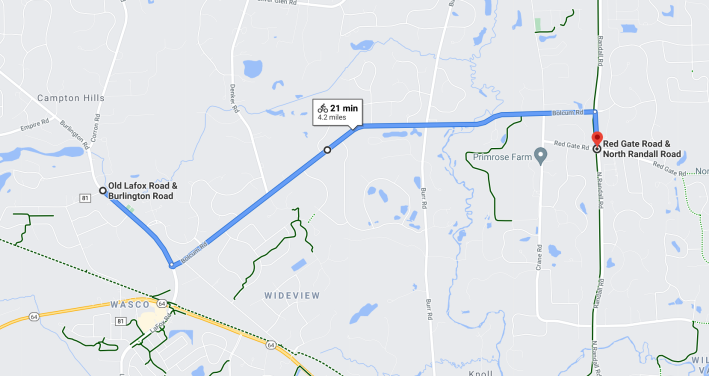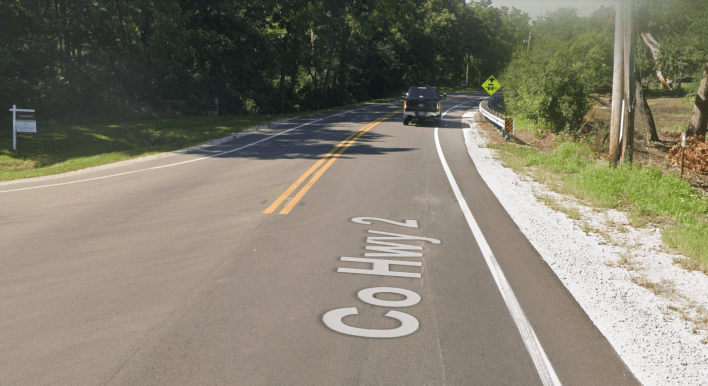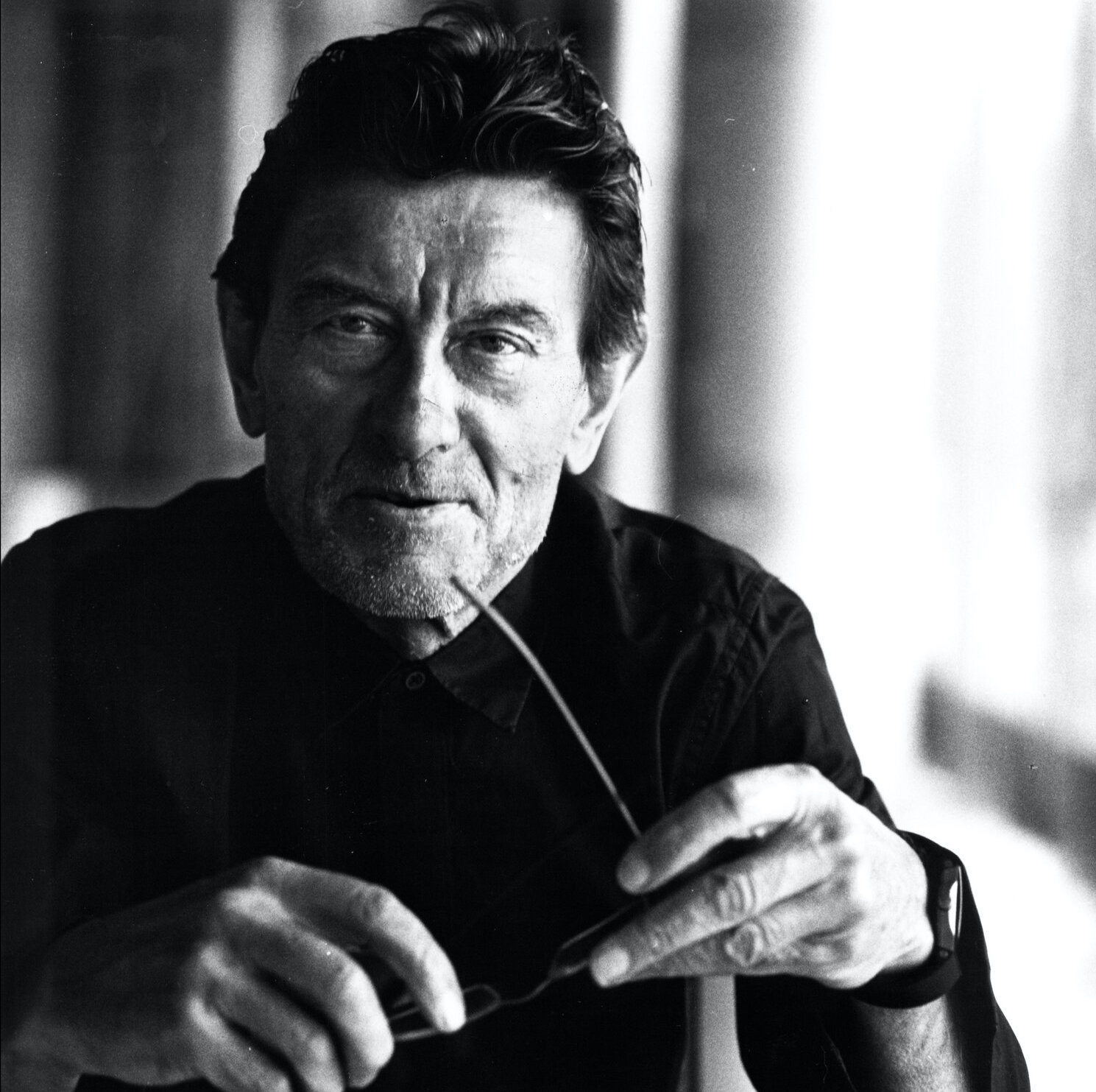This recent bicycle crash death of architect Helmut Jahn, 81, the designer of beloved Chicago icons like the Thompson Center and the rainbow-lit tunnel in O'Hare Airport's Terminal 1, was a blow not just to the architecture world, but also the local bike community. Many Chicago-area cyclists empathized with his tragic passing, as evidenced by multiple rides honoring him this month.
On Saturday, May 8, at about 3:30 p.m. Jahn was riding northeast on Old Lafox Road, a quiet two-lane road, toward its T-shaped intersection with Burlington Road, a busier highway, in far-west-suburban Campton Hills, near St. Charles, according to the Campton Hills Police Department. The junction is about a mile north of the Great Western Trail.
According to a statement from the police, multiple witnesses said Jahn “failed to stop at the posted stop sign.” A male motorist was driving silver Chevrolet Trailblazer SUV southeast on Burlington when he struck Jahn in the southeast-bound lane, according to the police. Then a woman driving a silver Hyundai Sonata northwest struck the cyclist in the northwest-bound lane.
Jahn was pronounced dead on the scene, police said. The female driver was taken to Northwestern Medicine Delnor Hospital in Geneva with non-life-threatening injuries. The male driver was uninjured. Neither involved driver was cited or charged, police said.
Last week former newspaper columnist Jeff Ward contacted Streetsblog Chicago to tell us our previous our reporting on the Jahn case, which argued that there were several unknowns about the incident, lacked key info on what really happened. Ward, who said he serves as a liaison between a local bike club and the Campton Hills police, told us he had a "lengthy conversation" about the crash with Campton Hills chief of police Steve Millar, which Ward wrote up for his Illinois politics website The First Ward Report. "It was [Jahn's] fault!" Ward told us. "In fact he hit the SUV and not vice versa."
Ward's article included a couple of red flags that suggested he might be inappropriately blaming the victim. First there was the title: "The cyclist is always gonna lose!" And the author explained that, while he's an "avid" road cyclist, nowadays he only rides a trainer in his bedroom due to "the vast arrogance of my road-biking ilk," whom he claimed are constantly riding recklessly.
Ward wrote that, contrary to the police statement and what other news outlets reported, Jahn struck the SUV's passenger-side mirror before he "he flipped over the handlebars and onto the windshield." He also claimed that the octogenarian architect was riding "at over 20 mph," which he told Streetsblog was info he got from Millar.
"So, to all the bicycle activists howling about safer intersections or who errantly insisted that driver didn’t have his eyes on the road, none of that would’ve mattered," Ward wrote in his article.
Active Transportation Alliance advocacy manager Maggie Czerwinski previously told the Daily Herald that potential solutions for preventing rural bike crashes like Jahn's include infrastructure improvements and lowering speed limits near intersections.
Howard Knoll, the SUV driver, told the Chicago Tribune that he did not see Jahn before the collision, and even after his windshield shattered he didn't realize that it was broken by the body of a cyclist, stating, "We didn’t even know what happened.”
Today I fact-checked Ward's piece with Millar, who told me multiple statements in the piece were inaccurate.
Millar, who was one of the responding officers, confirmed that all the witnesses, including Knoll, the Hyundai driver, and at least one other person in another vehicle, told police Jahn ran the the stop sign. However, again, Knoll told the Tribune he didn't actually see Jahn before the crash.
The speed limit on Burlington is 45 mph. Knoll told the Trib he was on his way to church, doing about 35 mph. Ward wrote, "[Knoll] pulled over within 20 yards of the impact which indicates he was going no more than 30 mph. Put more simply, he certainly wasn’t speeding."
Millar told me, "We never made any mention of driver speed," but added that Knoll "stopped within 45 or 50 yards of the first impact, and there were no skid marks." The police chief has been a crash investigator since 1994, and he said this data indicates that Knoll wasn't speeding at the time of the collision. A crash investigation team also came out to the site, but Millar said he doesn't have the team's report yet.
But as for Ward's claim that Jahn hit Knoll's passenger-side mirror before flipping over his handlebars onto the windshield, Officer Millar said that's false. "Yeah, I don't know where he got any of that."
Rather than Jahn striking the side of the Knoll's SUV, the driver struck the bike rider at a right angle, also known as a "T-bone crash," Millar said. "The full side of the bike hit the center of the hood. Mr. Jahn was ejected off the bicycle and into the windshield, and then bounced into the path of the other vehicle. The bicycle went under the front wheels [of Knoll's SUV.]"
Ward speculated, "Since a veteran road biker like Jahn didn’t see the stop sign or four rapidly approaching vehicles, the only logical explanation is that he forgot where he was, he had a medical event, or he was so single-minded he wasn’t paying attention to anyone or anything."
Millar said of Ward's statement, "There's a lot of assumptions there."
There has been no indication from the Kane County Coroner's office that Jahn suffered a medical emergency, such as a stroke or a heart attack, that might have impaired his ability to detect or stop for the stop sign. According to to a statement from the coroner, the preliminary findings of the May 10 autopsy were that the victim died from injuries consistent with a driver striking a person.
Millar, who saw Jahn's body after the crash, told me, "There were obviously some broken bones, but I'm not a doctor and would hate to speculate on what the injuries were."
In response to my question, the police chief said there has been nothing to suggest that Jahn was suicidal, which would have raised the question of whether he intentionally rode into traffic.
However, Millar said that, based on his own experience riding bikes – he rides for recreation on the Great Western Trail and elsewhere – he does have an opinion on what Jahn was doing when he entered the T-shaped intersection. "Based on where he was in the intersection when he was struck, all indications show he was making a left turn. If he was making a right turn, [Knoll] would have hit him more at an angle."
Along with his wife Deborah, Jahn had a suburban home and horse facility, Seven Oaks Saddlebreds, located about four miles east of the crash site at Red Gate and North Randall roads in St. Charles. Had he been on his way home, say from riding on the Great Western Trail, the most direct route would have been to make a right turn at the T intersection.

However, Millar said there's it's unclear what Jahn's destination was when he was struck. "His wife just said he liked to ride out that way but did not know exactly where."
As for Ward's claim that the police chief told him the elderly bike rider was going over 20 mph at the time, Millar said that's untrue. "We have no estimate of how fast he was going."
Millar raised the possibility that Jahn simply failed to notice Knoll's SUV before entering the intersection, possibly in part due to the street layout. "There's a slight curve in the road there [on Burlington northwest of the intersection], so you really need to look right and left before you enter."

The bottom line, Officer Millar said, is that there's absolutely no evidence about exactly what happened prior to the crash, except that the witnesses say Jahn didn't hit his brakes. "It's just an unfortunate incident. Why he didn't stop, none of us will ever know."







